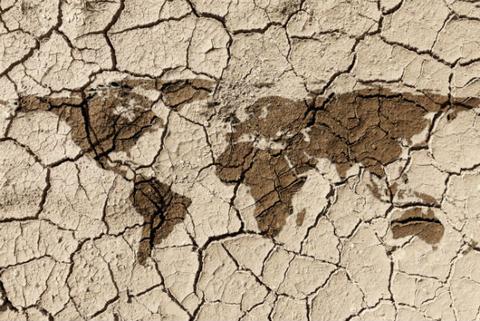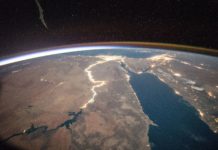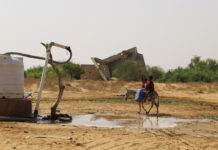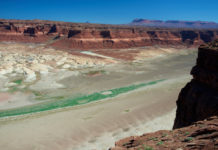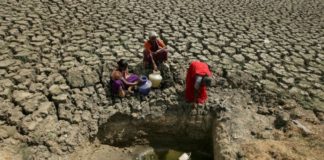This post on water wars is part of an ongoing series where we are tracking the global water crisis.
In 2012 Adel Darwish, author of the book Water Wars: Coming Conflicts in the Middle East, predicted the next water war to break out would likely be in Yemen. In 2015 war broke out in Yemen. It has not been called a “Water War.” It has been more frequently classified as a sectarian or even a regional conflict between Sunni and Shiite Muslims backed by the respective power brokers of Saudi Arabia and Iran.
But what if the political lens we are seeing and interpreting these conflicts through is actually mistaken? What if we are actually already beginning to experience the onset of water wars in the same regions that also hold the most strained aquifers and water resource systems?
Far above the emptying aquifers, on the surface of the earth, human conflict is erupting. Yemen is only one of those stories. The Democratic Republic of the Congo sits on an aquifer system that is losing water three times faster than studies previously calculated. There have been ongoing conflicts here since the mid-1990s. Earlier this week I noted in another post how violence has maintained the DRC’s status as holding some of the highest internal displaced people populations on the planet.
The Murzuk-Djado Basin in North Africa is the second most stressed aquifer in the world. Consider the fighting and upheaval that has raged in the area of Northern Africa that sits atop this drying water resource system in the last decade. We have been taught to relate the fighting to collapsed dictatorships, Arab Spring, ISIS, Benghazi, and more but literally beneath the surface of these lands of where conflict is so common is the more basic issues of a struggle for resources and survival.

The United Nations has suggested there are more than 300 potential conflicts worldwide related to water resources including river borders and the drawing of water from lakes and aquifers.
Scholars are divided on whether or not water resource declines can result in conflict. Many point out there has not been a war waged directly over water resources for more than 4,500 years. This perspective oversimplifies the issue. While there may not have been many “water wars” in the last few millennia, there have been plenty of wars over resources, oppression, and injustices.

(See this cool timeline of Water Conflict Chronology from the Pacific Institute. You will note how they document frequent conflicts (water wars) and violence already occurring in the world’s most water-stressed areas.)
When we recognize that water is only one of the basic needs of life necessary for human survival, it is easier to recognize that it may be only part of the picture that leads to a greater conflict. The Pentagon has called these types of issues a “threat multiplier” when considering how a reduction in basic life-sustaining resources contributes to global security and the potential for warfare.
A Columbia University report found that “the risk of a low-level conflict escalating to a full-scale civil war approximately doubles the following year.” Translation, when rainfall decreases, risks of conflicts exploding into civil war increases.

In an assessment of potential risks due to natural resource limitations, the multinational PricewaterhouseCoopers observed, “Just as war over fire sparked conflict among early prehistoric tribes, wars over water may result from current tensions over this resource in the next few years. The Near and Middle East are the zones where there is the greatest threat. Two-thirds of the water consumed in Israel comes from the occupied territories, while nearly half of the Israeli water installations are located in areas that were not part of it pre-1967.”
The United Nations has suggested there are more than 300 potential conflicts worldwide related to water resources including river borders and the drawing of water from lakes and aquifers.
Since 1950 alone, the amount of renewable freshwater available in the world has decreased by 58 percent per person. As a result, one-quarter of water-related interactions within the geopolitical sphere in that same time period have been of a hostile nature.
The water wars are coming if they are not already here. These water wars are just one facet of the ongoing global water crisis that is confronting our generation.

